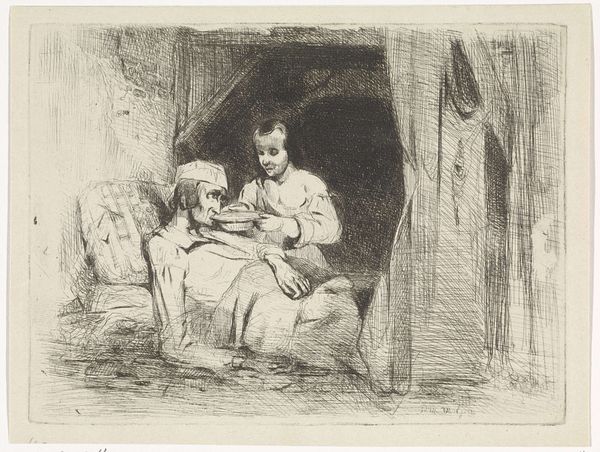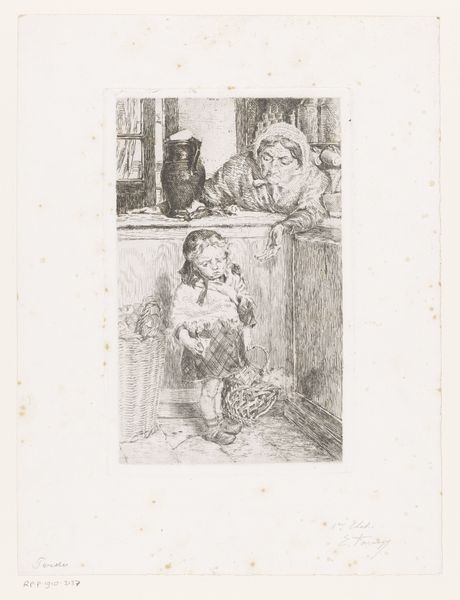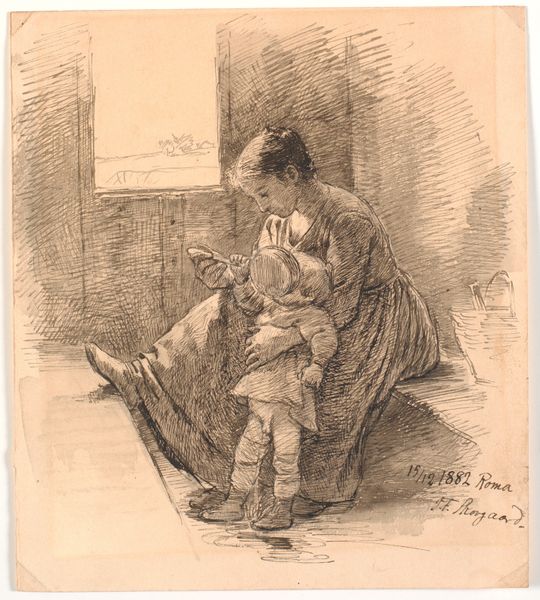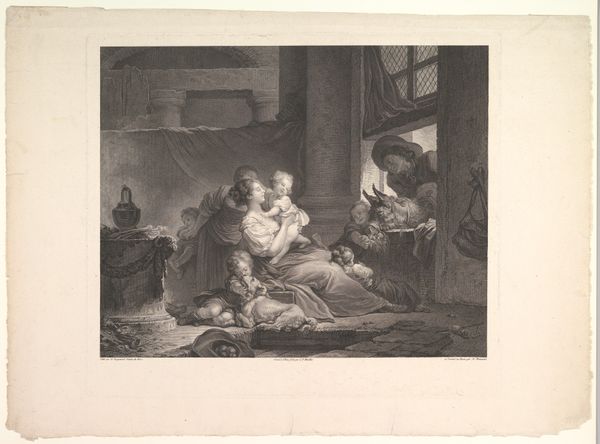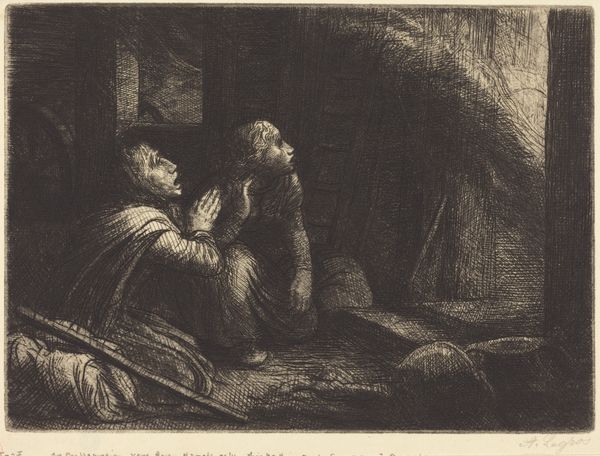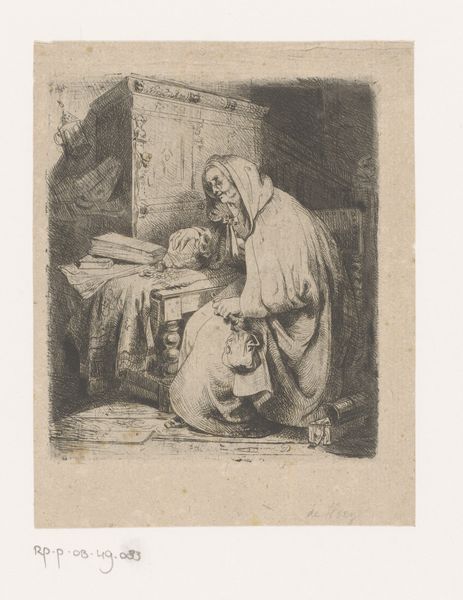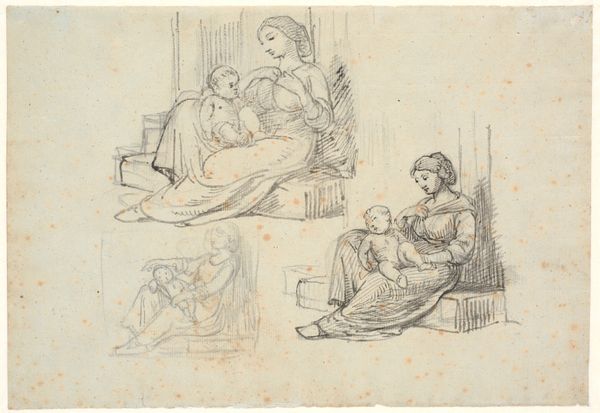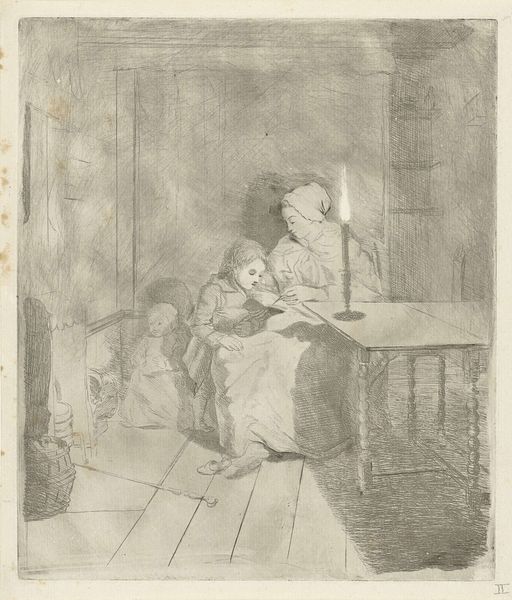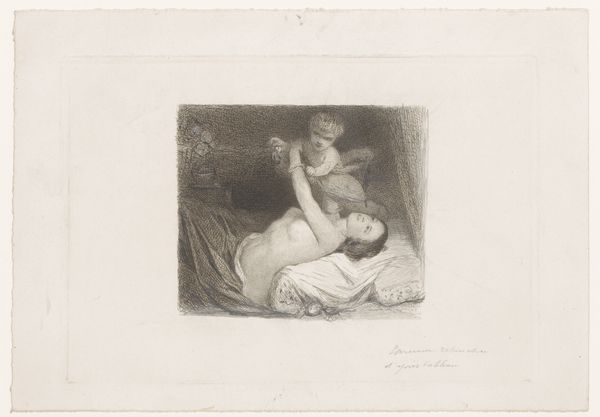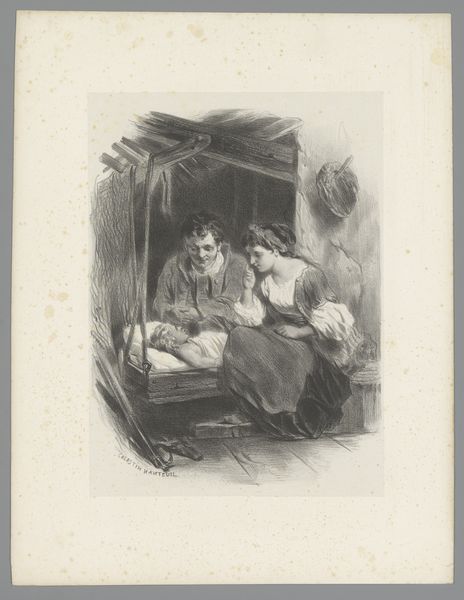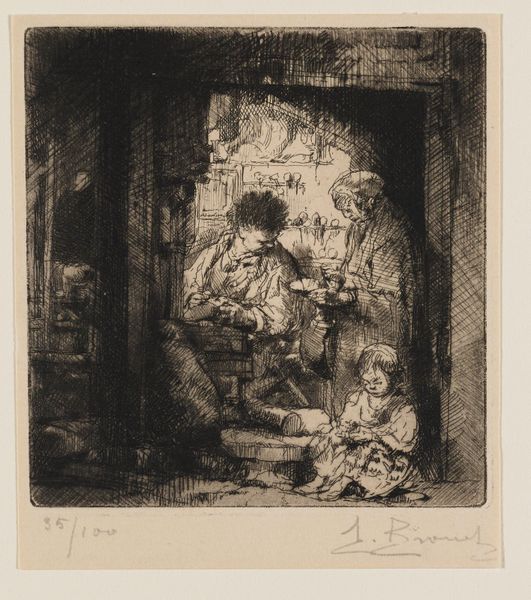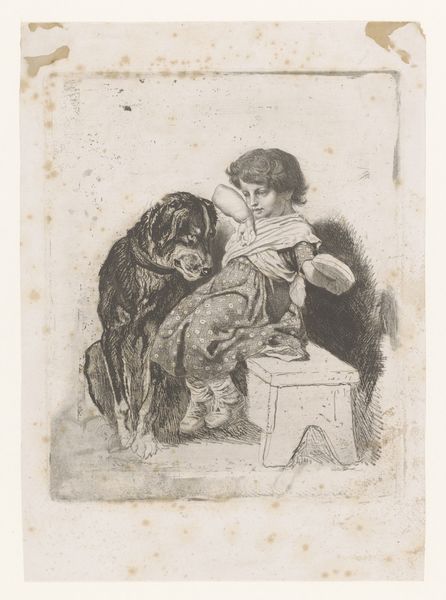
drawing, ink, pen
#
portrait
#
drawing
#
amateur sketch
#
light pencil work
#
quirky sketch
#
pen sketch
#
pencil sketch
#
personal sketchbook
#
ink
#
pen-ink sketch
#
sketchbook drawing
#
pen
#
pencil work
#
genre-painting
#
realism
#
initial sketch
Dimensions: height 120 mm, width 160 mm
Copyright: Rijks Museum: Open Domain
Curator: Petrus Marius Molijn's "Zieke man krijgt te drinken," created sometime between 1829 and 1849, depicts a man being offered refreshment while bedridden. My first thought is the contrast in textures—the rough lines suggesting the room's dimness, set against the smooth faces of the figures. Editor: It's a very intimate and domestic scene, isn't it? You immediately see how class and access to care are portrayed through the labor dynamics present in this piece. Curator: Absolutely. Molijn utilizes the simple materials of pen and ink to explore the play of light and shadow, lending a striking dimension to the genre scene and portrait elements here. The use of line work especially. Editor: For me, it’s the question of where the figures are placed within the larger system of labor. Were they employed or impoverished, or both? What impact did their working life have on this particular setting? Curator: It seems Molijn emphasizes emotional and psychological realities through realism. His strokes capture a vulnerable intimacy that’s difficult to ignore, right? The medium contributes significantly to the artwork's immediacy. Editor: The material reality emphasizes a particular view: that of the lower class depending on a social care system. How would this image change if painted using oil on canvas by a more privileged person? What implications does access have? Curator: That's a vital point. This being a sketch rather than a finished painting hints at its potential accessibility, perhaps for didactic purposes or for circulation amongst his peers. It begs the question of the work's intent, or maybe even Molijn's. Editor: Or maybe it's less a statement and more an observation, shaped inevitably by Molijn’s social status. After all, artistic creation never happens in a vacuum; economic factors often determine the distribution and audience reception of works such as these. Curator: Examining how such works both mirrored and potentially influenced societal attitudes of its time really underscores its value and what one may come to glean from a close observation. Editor: Yes, thinking about its production, viewing conditions, and societal role enhances its importance to viewers today.
Comments
No comments
Be the first to comment and join the conversation on the ultimate creative platform.
